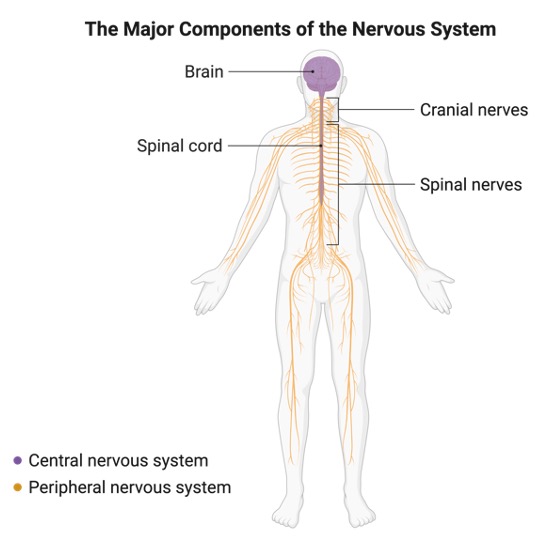Table of Contents
Central Nervous System Definition
The nervous system is a biological information highway that controls all biological processes and movement in the body, as well as receiving and processing information via electrical impulses. The Central Nervous System (CNS), which is essentially the processing region, and the Peripheral Nervous System, which detects and delivers electrical impulses utilized in the nervous system, make up the nervous system.
What is Central Nervous System?
The Central Nervous System is the component of the nervous system that processes information received from the peripheral nervous system, and it serves as the nerve system’s nerve center. The nervous system is responsible up of the brain and spinal cord.

It receives and interprets information from the peripheral nervous system, as well as sending messages to it, whether consciously or subconsciously. The nervous system, often known as the information highway, is made up of many nerve cells, also known as neurons.
Central Nervous System and Nerve Cells
Each neuron has a nucleus located in the cell body, from which outgrowths known as processes emerge. The axon, which is responsible for conveying outbound messages from the cell, is the most important of these processes. This axon can begin in the CNS and extend all the way to the extremities of the body, thus acting as a highway for signals to and from the CNS to these body extremities.

Dendrites are secondary processes that branch out from the cell body and axon. The axon terminals, which ‘plug’ into a cell where the electrical signal from a nerve cell to the target cell may be produced, are located at the end of these dendrites. The axon terminal is a ‘plug’ that connects to a receptor on the target cell and may send and receive information.
How Nerve Cells Communicate?
Because nerve cell communication employs an on/off signal (akin to a digital signal) to maintain the message clear and effective along its travel from the CNS to the target cell or vice versa, the “All-Or-None-Law” applies. This is an important consideration since, like electrical signals, the signal degrades with time and must be strengthened along the way. The messages are absolute if the message is either 1 or 0 (on or off).
Classification of Neurons
Neurons that are fully contained within the CNS are known as interneurons. Afferent neurons, also known as sensory neurons, are specialized for transferring impulses from the peripheral system to the CNS. The central nervous system sends messages to peripheral cells through efferent neurons.
Central Nervous System Citations
- Embryonic Development of the Central Nervous System. Vet Clin North Am Small Anim Pract . 2016 Mar;46(2):193-216.
- The role of the gut microbiota in development, function and disorders of the central nervous system and the enteric nervous system. J Neuroendocrinol . 2019 May;31(5):e12684.
- Alcoholism and its effects on the central nervous system. Curr Neurovasc Res . 2013 Aug;10(3):256-62.
- Neuroinflammation in the central nervous system: Symphony of glial cells. Glia . 2019 Jun;67(6):1017-1035.
- Figures are created with BioRender.com







